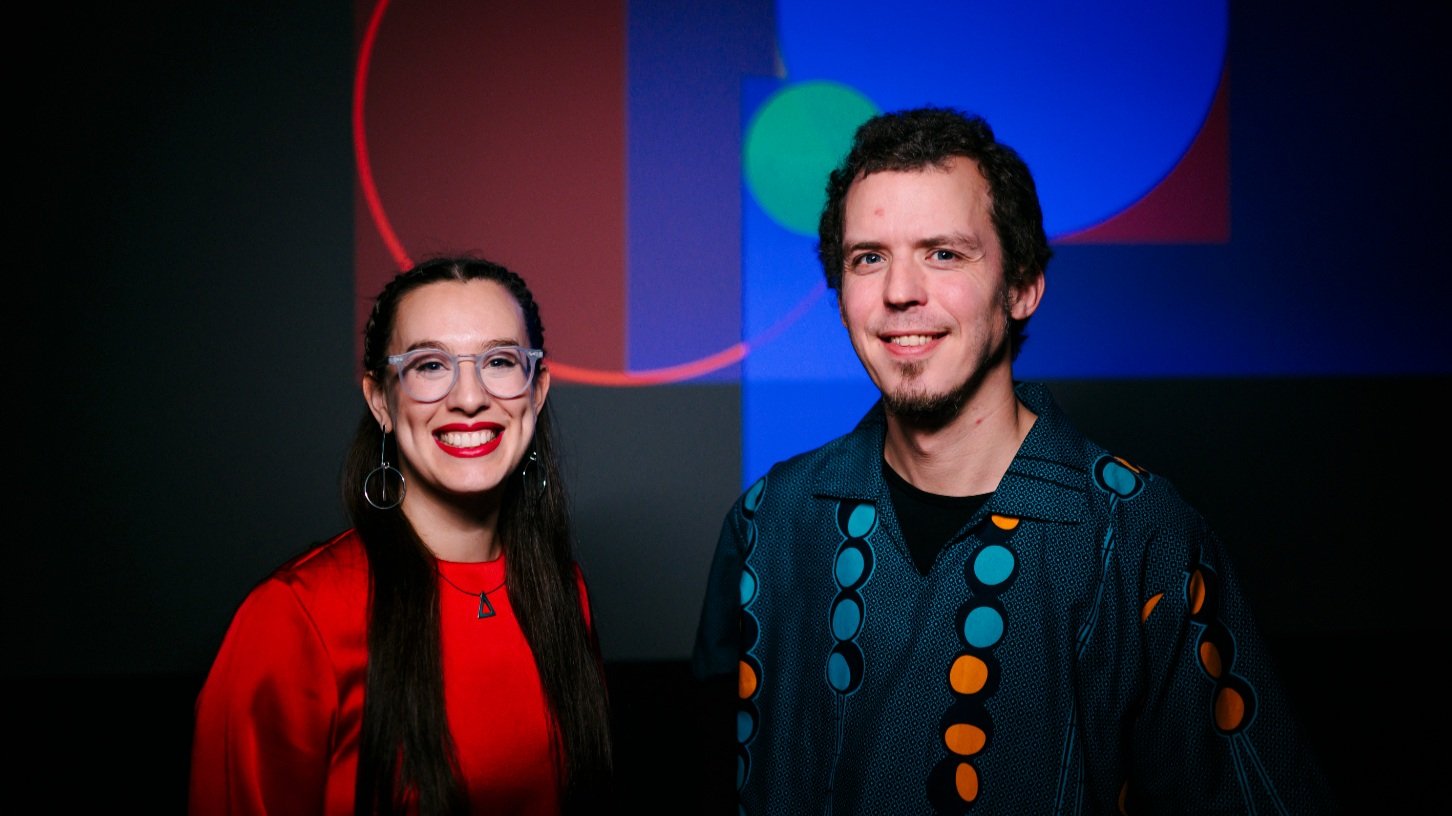MIMA & shemza.digital: Adventures of the Squircle
As you may know, I’ve been working on the shemza.digital project since its launch in 2020 in collaboration with the computer artist Stuart Batchelor. I recently collaborated with MIMA (Middlesbrough Institute of Modern Art) for its latest iteration. shemza.digital combines the abstract art of my grandfather Anwar Jalal Shemza (1928-1985), with my contemporary digital practice. The project is funded by Arts Council England and is made for and with the British public, creating art which is accessible to all through its educational programme of digital art workshops, hybrid exhibitions and participatory and interactive artworks. The collaboration with MIMA came about because the Middlesbrough Collection holds my grandfather’s ‘Magic Spiral’ (1970) painting.
Image: Anwar Jalal Shemza ‘Magic Spiral’. Collection MIMA and Victor Musgrove, Anwar Jalal Shemza and George Butcher at Gallery One, 1960.
When we were first thinking about how this collaboration would take place, I reached out to Peter Todd, who I now collaborate with alongside a whole team of creative people, to help realise my vision for the project. Together we built a new bespoke painting application based on Anwar Shemza’s square and circle ‘squircle’ motif which he used in his works. Our new Squircle application allowed us to collaborate with the public in this new project. The application is an interactive three.js canvas, which allows the user to alter the colours and design of their Squircle design motif.
Image: Aphra Shemza and Peter Todd. Image by Matthew Kaltenborn & screen recording of the Squircle painting app.
In February, I worked with students from the School of Arts & Creative Industries, Teesside University and members of the public from MIMA’s Art+Social group for a series of workshops. Participants created individual digital Squircle tiles which I then drew together. These tile iterations then went on to become a series of co-created artworks - shemza.digital #13, #14 and #15.
Image: Student work from the workshop. Image courtesy of MIMA.
The first artwork, shemza.digital #13, is an animated film showcasing the outcomes of the digital workshops and all the squircles created by the public with our new digital painting application. The animated film works as a loop, and can be projected to different sizes. In order to create this artwork, I downloaded all the squircles and processed them using Illustrator, where I turned them into each of the frames that I would then animate using Adobe Premiere Pro.
Image: Test of the animation on the light banner. Video: shemza.digital #13 animation.
Originally, we were going to use the digital banner outside of the MIMA building to project the animated film and make it into an interactive artwork. Unfortunately, the digital banner became unavailable during the development of the project, which meant that we had to come up with some creative solutions. This is not uncommon - the direction and outcomes of a project can sometimes change due to circumstances outside of my or the client’s control. We now had to come up with a different way to use the MIMA building’s resources.
I came up with a two-pronged solution: creating an alternate format video hosted on MIMA’s Youtube which would still keep the animated element of shemza.digital #13 and an external window vinyl installation that would allow people outside of the MIMA building to engage with the artwork. This satisfied the original parameters set out at the beginning of the project.
Video: shemza.digital #14, Image: screenshot of shemza.digital #14.
For shemza.digital #14 we needed to adapt the format of shemza.digital #13, originally made to the dimensions of the light banner, which wouldn’t fit a 16:9, the usual constraint for a Youtube video. We rearranged the squircles into three lines instead of one, to take advantage of the new rectangular format and still keep the spirit behind the original animation.
Then, in shemza.digital #15, I selected a number of squircles to fit the space available for the external installation. MIMA proposed that we use their balcony, which was measured so I could design a vinyl installation that would fit the space perfectly. I then downloaded the selection of squircles and processed them with Illustrator in order to turn them into vector files so they could be printed and cut out to size. We then installed the banner on the balcony.
Image: shemza.digital #15, installed on the MIMA balcony. Image courtesy MIMA.
Being an artist means that we must learn how to adapt our ideas in order to overcome challenges, and this project reminded me that there is always more than one way to deliver the outcome: making art accessible to all. The co-creation process means I can involve the public and make them part of the creative process - the authorship is no longer just mine, and the process becomes a communal one. I am extremely thankful to MIMA for this opportunity, and of course to all the workshop participants who collaborated with me to make these new artworks.











